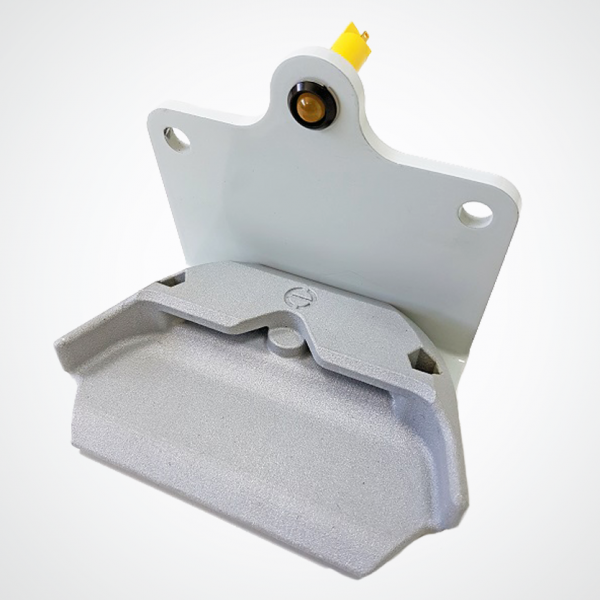3D Printed Castor Tool Home Position for Hatton Systems
The Benefits:

70% Cost savings.

Reduced human error.

Aesthetically appealing.

Quick Assembly.
Driving innovation in vehicle test equipment.
Bennett Engineering Design Solutions has been working with Hatton Systems, who supplies automotive test equipment, for over nine years as an extended ‘virtual’ design resource. An essential part of Hatton Systems’ offering is to constantly upgrade the range of vehicle test equipment available to automotive manufacturers by pushing the technical boundaries in this field.
Having successfully engineered the design of Hatton Systems’ Castor Angle Measurement Tool, which measures an element of the suspension geometry; another repeat order prompted the team to reconsider the design of the Castor Tool Home Position too, which stores the tool when not in use. The team at Bennett Engineering Design Solutions believed that by value engineering the existing design it would deliver greater efficiencies to the testing procedure for vehicle test operators.
Craig Harbron, Design Engineer, Bennett Engineering Design Solutions, explains: “We had previously designed the Castor Tool Home Position with very little time and knew it was ready for a review, as we believed the number of parts needed and time required to assemble could be significantly improved.”
“We also understood that the product needed to offer a range of mounting possibilities. So we began the process of exploring a simple and effective value engineered solution. Having also recently advanced our knowledge of 3D printing, we decided to propose a new design using this very latest technology to Hatton Systems.”
The Solution:
The aim of the Castor Tool Home Position is to provide a position for the tool to rest in when not in use – its ‘home’ position. The Home Position includes an embedded sensor which signals when it‘s in this position. Sometimes however, different tool versions can be found side by side for each vehicle model. So there is now an LED mounted in the bracket to indicate the right tool to use for the test equipment operator.
The position sensor can also be used to alert the operator if the wrong tool was removed from its ‘home’ position. But most importantly, the sensor informs the operator that the tool has been returned ‘home’ and is not attached to the vehicle – preventing the car from being driven off with the tools still attached!
The previous design featured six nylon plates that required fixing together. The new design however, is just a single part with a mounting bracket fastened to it using only two fasteners. The design’s captive bolts provide a ‘cleaner look’ while preventing the bolts from turning when being tightened, simplifying the assembly. Alumide (a 3D printing material) was chosen since it delivers a good industrial finish to the completed product.
Traceability and branding at no extra cost
By using 3D printing technology to their advantage, the team were able to include a part reference number for traceability in the printed body, simply by including this in the 3D model design. This removed the need for an identification plate or a stamping process. The new 3D printed version with the included part reference and logo virtually has no cost implications at all.
Craig Harbron continues: “The new 3D printed design dramatically reduces the assembly time and manufacturing costs while offering enhanced functionality and a highly engineered look. The design brings a massive 70% cost saving compared to the original; it reduces the assembly time, as well as manufacturing lead times by 30% – with far less risk of human error. This latest design helps to bring greater efficiency and ease of use to the vehicle testing process for automotive manufacturers, therefore enhancing Hatton System’s test equipment range.”


